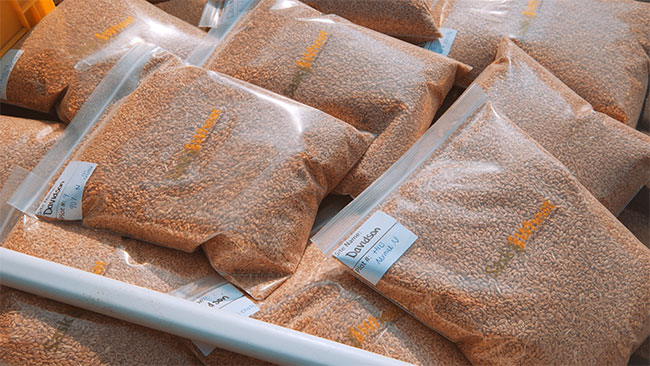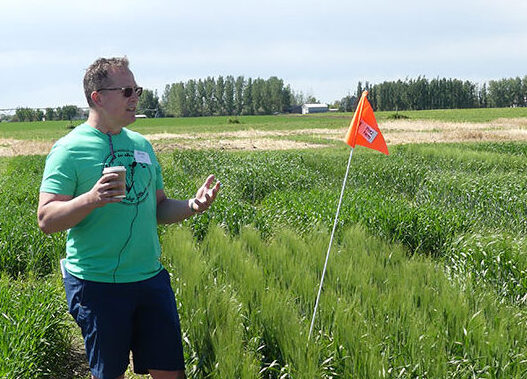| |
| |
 |
 |
| |
 |
|
@{mv_date_MMM d, yyyy}@ |
|
| |
A new flour mill is expected to be completed in late 2026 in Red Deer County, Alta. and expected to mill approximately 750 metric tonnes of wheat from Western Canadian farmers each day. P&H Milling Group, a division of Parrish & Heimbecker, Limited, recently announced the construction, which represents their investment of $241 million. The facility is expected to generate up to 200 jobs and serve a variety of end-use customers.
» Read More...
Brought to you by Koch Agronomic Services
For effective dual UAN inhibition, the answer is clear - nitrogen stabilizers from Koch Agronomic Services.
» Learn how to boost nitrogen efficiency
Gate Capital Campaign, led by Cereals Canada, received funding commitments from Alberta Grains, Saskatchewan Wheat Development Commission (Sask Wheat), Manitoba Crop Alliance and Grain Farmers of Ontario, bringing its total to $18.4 million. The Global Agriculture Technology Exchange (Gate) is a visionary $102 million project aimed at advancing Canada’s position as a leader in cereal grain innovation and global food security, to be built in downtown Winnipeg.
» Read more...
A website is now available for farmers battling root rot in peas and lentils. Manitoba Pulse and Soybean Growers (MPSG), as part of the Pulse Root Rot Network, launched rootrot.ca to catalyze a collaborative approach to root rot research and management focused on agronomy, breeding and pathology in peas and lentils.
» Read more...
|
| |
|
| |

Submissions are rolling in for our 2024 Cover Photo Contest! Think your farm has what it takes to be featured on our magazine cover?
Top Crop Manager wants to show off the ins and outs of the 2024 growing season, from seeding to harvest and every step in between. Enter before October 1 for a chance at your photo being featured on the cover of Top Crop Manager’s December print issue.
» Submit photo
|
| |
|
| |
 In 2023, Sask Wheat, SaskCanola, SaskBarley and the Saskatchewan Pulse Growers (SPG) all offered on-farm research protocols to producers under their respective programs. Farmers who decided to participate tried new practices and products on their own farms, using their technology and equipment on a commercial field scale.
» Read more...
In 2023, Sask Wheat, SaskCanola, SaskBarley and the Saskatchewan Pulse Growers (SPG) all offered on-farm research protocols to producers under their respective programs. Farmers who decided to participate tried new practices and products on their own farms, using their technology and equipment on a commercial field scale.
» Read more... |
| |
 One researcher has looked into how genetics and agronomy could not only compensate for changes in climate, but also how they could be used to increase yield. He cites how adapting to changing growing conditions through ultra-early seeding of wheat and can improve crop production. He also investigated how genetics and nitrogen (N) management impact the critical growth period.
» Read more...
One researcher has looked into how genetics and agronomy could not only compensate for changes in climate, but also how they could be used to increase yield. He cites how adapting to changing growing conditions through ultra-early seeding of wheat and can improve crop production. He also investigated how genetics and nitrogen (N) management impact the critical growth period.
» Read more... |
| |
| |
|
| |
|
|
| |
| |





